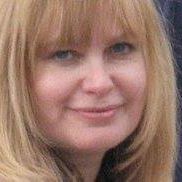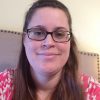
Conversations:
Linda thanks for talking to CONVERSATIONS today. You’ve been in health care research for over 10 years. Take me back to the beginning. How did you get started in health care research? What brought you into this industry?
Linda Sales, Sundial:
Hi, Doug.
Well, it was by chance actually . . . Out of college I had 3 job offers. One of them being for Citibank, in what they called “The Lab”. I t was a facility where they conducted research on new ATM technology.
That was the job I took, and there began my career in Market Research.
Conversations:
On the consumer side . . . ?
Linda Sales, Sundial:
Later on, a few companies later, I joined Sundial. I now work on almost exclusively Healthcare/Pharma research.
Yes, when I began at Citibank, it was mostly consumer work.
Conversations:
Now, Sundial works in patient, physician and HCP work? And you personally work in all 3?
Linda Sales, Sundial:
Yes. We work with all 3.
Conversations:
Research is generally divided into three phases. Phase 1 is Design; Phase 2: Data Collection or Fielding: Phase 3: Analysis. Take us back to the first phase. Client comes to Sundial and says, we’re interested in doing some patient research for . . . let’s say: Parkinson’s. Briefly summarize the process from there . . . how the project originates and the design is effectuated.
Linda Sales, Sundial:
Well, the client would say we want to do work on Parkinson’s. We want to do “Patient Journey” work.
So, we’d like to chat with Patients, Physicians who treat them and office staff who deal with medications and payments.
This plan would be most effective being done “online” as that is where could attain the most participants
Or perhaps one market in person and then phone/online.
Conversations:
Online being quantitative research and phone with web interface being qualitative?
Linda Sales, Sundial:
Yes, we do mostly qualitative, so I meant phone/web interface. We do some quant, but not a lot (mostly just physicians).
Conversations:
Yes. Because in most serious and rare diseases, you can’t do quant because it is not possible to reach enough participants . . . 50 or 100. So to that point, let’s switch off Parkinson’s and use a better example of . . . ugh . . . AML and speak more qual since that is more of a specialty.
Linda Sales, Sundial:
How about Prostate Cancer? I have a friend with AML and it’s too close to home!
Conversations:
Or prostate cancer! We’ll move to that. How involved are your clients with design? I am sure it varies but on a general basis. Is that generated by Sundial? In tandem with the clients? How much dialogue and interaction is there to finalize design . . .?
Linda Sales, Sundial:
We create the design in tandem with the clients. They will tell us what the “end game” is as far as the results they are looking for. Then we will suggest a design that best fits.
Conversations:
Most of your clients are companies with treatments in that condition . . . here prostate cancer? So pharma companies . . . with a treatment in market or coming to market in that condition?
Linda Sales, Sundial:
There is usually a written document first and then a discussion.
Conversations:
As opposed to universities or hospitals or insurance . . .
Linda Sales, Sundial:
Yes. Usually pharma companies with either a treatment on the market or coming to market.
Conversations:
Now some patients might think, “Oh Pharma . . . big bad wolfie . . . so greedy . . .” How do you respond to that? Do you feel the people you work with care about the patients? Their lives? Their outcomes? Or are they just a data point?
Linda Sales, Sundial:
Yes, we do get that reaction sometimes. Most of the clients I work with are truly interested in the patients feelings and their journey. A lot of the drugs they bring to market REALLY help people. As opposed to just making money.
Conversations:
They are FDA approved so they need to prove that they indeed help people! But sometimes that escapes people . . .
Linda Sales, Sundial :
True. You get all types of reactions in research. As many reactions as types of people! I know, I used to be a waitress! LOL.
Conversations:
Of course. Participation is patient research is a choice. And one we are respectful. If people do not want to give their opinions as to their condition and treatment, we completely respect that. But, many people do. They want to be engaged. And part of the yes, conversation about treatments in their condition.
Linda Sales, Sundial:
Absolutely. Most people just want you to Listen to them… like anything else in life. People want to know they are being heard. And we give them an outlet for that.
Conversations:
Definitely and it’s important that researchers do . . . exactly, that they are being heard.
Linda Sales, Sundial:
Right.
Conversations:
Now you lock down the design with your end or sponsoring client . . . then moved into data collection or fielding. You hire companies like Find A Cure Panel to help find or recruit the participants. In a qual project which is general a phone call with web access, 15 or 20 or 25 participants are recruited . . . your first interaction tends to be when they dial in and pick up the phone.
Conversations:
Now, I don’t believe you personally moderate. But do you listen to all the calls live? Or audiotaped?
Linda Sales, Sundial:
I don’t listen to all, but a fair number. The first thing we do is assure people that we are NOT the client but an independent company who is hired to hear their opinions.
Conversations:
Yes.
Linda Sales, Sundial:
Good or bad or in between.
Conversations:
And that there are, let’s say 100 companies in the US who specialize in healthcare research of which Sundial is one of them. Now, Linda Sales, Sundial , do the end clients get involved in data collection or fielding? Or they just receive the analysis? I know it varies. Some seem to be hanging on every call where other times, they don’t listen to the calls at all. Not live anyway. What’s your experience there?
Linda Sales, Sundial:
Recently, I’ve had a lot of clients listening in. That gives them a chance to be part of the research process and change things as they go along, if necessary.
Conversations:
Yes. That seems to put a lot more pressure on the process. Like the research clients “freak” if the participant calls in 3 minutes late. How do you pet your client in those situations?
Linda Sales, Sundial:
I try to keep them informed. They know that people are busy (particularly physicians) so if they know what is going on, it’s easier to keep them calm.
Conversations:
Agreed. We always try to give clients a heads up if the participant is likely NOT to call in or will call in late to avoid this call alarm.
Linda Sales, Sundial:
Exactly. Better to wait and get a good respondent and good info.
Conversations:
Linda, how would you describe a “great” participant? Clients often say to me . . . “oh, she was great.” What does that mean?
Linda Sales:
It means the person was 1) honest and 2) was able to articulate their thoughts and feelings. Even if what they are saying is negative, if they express it well, the clients will listen.
Conversations:
Yes. But it can be a counterintuitive dynamic. Because is the least educated, articulated people who the researchers often need to reach. NOT the most edified. Indeed, an educated, articulate, interest participant is gold. But those less educated are crucial too . . .
Linda Sales, Sundial :
Absolutely correct! However, even if they are less articulate, if they are honest, they usually can get their point across.
Conversations:
Yes. Being involved in patient research, you hear every day, the great divergence in the quality of care. How someone especially in a more rural area gets less effective care and treatment than a person in a large metro area who has access to the top hospitals and physicians. How do you internalize that when you hear a person fighting for their life and you know from talking to them vs. the other 20 participants, that they are not getting optimal care.
Linda Sales, Sundial:
It’s very sad and it’s hard to stay impartial. But it’s important for the research that we give everyone the same voice.
Conversations:
How do you?! You’re listening on the call and you know they are not even informed as to the most recent treatments available . . .
Linda Sales, Sundial:
Again, it’s hard.
Conversations:
It is extremely hard.
Linda Sales, Sundial:
But since I am not speaking with the person, the most I can do it discuss it with the moderator later on.
Conversations:
Of course, you do NOT know who the person is? All the calls are confidential and anonymous to the researchers. All you know is that Linda, age 30 with X disease, is calling in at 6:00 PM and some basic demo points like time of diagnosis, current treatment etc. But you receive no PI (personal information?)?
Linda Sales, Sundial:
Correct.
Conversations:
Thanks for confirming.
Linda Sales, Sundial:
We get no personal info at all.
Conversations:
Linda, virtually all the patient calls require the participants to have computer access. Participants always ask me, “why do I need to be on computer?”
Linda Sales, Sundial.
It’s important for us to be able to share documentation. Wording, products, pictures
. . . Without the help of a computer this info would be very hard to convey. A picture is worth a thousand words, right?
Conversations:
I understand. So they are in a digital “room”? But the researchers have no access to their computer?
Linda Sales, Sundial:
No. correct. The researchers share their screen. We have no access to their computers at all, it’s the opposite
Conversations:
So the participants see the researcher’s screen . . . understood.
Now, you plow through the 20 participant calls. In our example, 20 prostate cancer patients and their caregivers. Linda, take us through the analysis phase. You’re now sitting on 20 60 minute calls. What happens next?
Linda Sales, Sundial.
Well, then we “categorize” their answers and try to make sense of them. Everything is done in aggregate, so no personal information is shared. We gather people’s opinions and we share with the clients what treatment or story or product came out on top. And why (to the best of our knowledge).
Conversations:
Can you define those categories . . . ? when the summary or analysis is shared? What are the category headers?
Linda Sales, Sundial:
A sample would be “product X” likes/ dislikes . . .or for an ad how “thought provoking/ clear/ unclear”
Conversations:
You say, 12 of 20 people preferred Product X; 6 preferred Product Y and 2 preferred Product Z?
Linda Sales, Sundial:
Right! And then we try to state why.
Conversations:
How is the analysis presented to the sponsoring client (which generally is the pharmaceutical company with a treatment in that condition)?
Linda Sales, Sundial:
We will give a synopsis or topline of our results. Giving the most Liked, less liked and then least. And then we’ll show the data to back it up.
Conversations:
In a face to face presentation? In a powerpoint? Both?
Linda Sales, Sundial:
Usually in a power point. Then sometimes a face to face if requested
Conversations:
Does that powerpoint have multi media elements? Like integrating actual responses from the call?
Linda Sales, Sundial:
Absolutely. We sometimes use quotes from respondents (always anonymous, of course) and then we’ll create charts of peoples responses.
Conversations:
In your career, can you share some successes (without betraying any confidential information) that you worked on that had some significant market impact? “We did this study where we learned X and our Client did Y and . . . We are working on a project right now.
Linda Sales, Sundial:
it is a new product to help with vascular surgery. Right now, it’s a long process to get this particular device made correctly for each individual.
After this research, there will be an “off the shelf” solution that will make the process much shorter and smoother and therefore save lives.
Conversations:
So it’s a customized patient vascular product . . . that the patients will be able to buy off the shelf and not get a prescription for . . . with enormous life saving benefits?!
Linda Sales, Sundial:
It’s a device that physicians can use. But a patient will certainly benefit from it greatly!!
Conversations:
That’s so exciting. Patient and physician research can be so rewarding, Linda. Thanks for talking to CONVERSATIONS today and facilitating all this important research.
Linda Sales:
Absolutely, Doug. Yes, this can be a very rewarding job. Happy to contribute to your exciting new venture.













